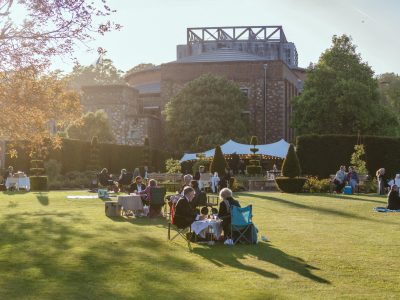
English Key Stage 4
Lesson one

Starter activity
Ask children to work in teams to create a list of ten plot points from memory. Then, show the trailer for the latest version of the Cinderella story produced by Disney.
Main activity
Ask the children to identify the main features of a fairytale. These should include: being set in the past ‘Once upon a time’, prince/princess, enchanted setting, magical elements, fantasy creatures, clearly defined good/evil characters and often a happy ending.
Ask the students to work in teams to plan out as many fairytales as possible using the features listed above in 15 minutes.
Homework
Set the students the following task: Write a persuasive speech, in which you explain why your favourite story is the archetypal fairytale. Use persuasive devices and make reference to the ‘features’ above throughout.
Lesson two

Starter activity
Encourage a class discussion about where modern fairytale stories come from. Folklore, legend and tradition of storytelling across the world?
Do any children know the names of fairytale authors? Brothers Grimm or Hans Christian Andersen?

Main activity
Explain that the Brothers Grimm wrote a version of this story, called‘Aschenputtel,’ in 1812. However, the version of the story we know best today (which inspired the 1950s Disney animated film) was written by French author, Charles Perrault. It is called Cendrillon and was written over 320 years ago, in 1697.
Explain that the opera being performed at Glyndebourne was written by Jules Massenet and is based on Perrault’s story.
Show children the trailer released in 2014, based on a cartoon from 1950.
Ask the students to research the plot of Cendrillon and make a table in their books of similarities and differences between the 1950s Disney cartoon and Glyndebourne/Massenet/Perrault versions.
Teacher notes: Similarities: The pumpkin, the godmother, and the glass slipper. Differences: character names, magic wood/oak tree and Cinderella’s near death experience.
Homework
Set the students the following task: Read this article which compares the Brothers Grimm story to Disney’s Cinderella.
Lesson three

Starter activity
The fairy godmother’s aria is described as having ‘glittering coloratura… filigree ornamentation…trickling runs and trills.’
With the children working in pairs, ask the class to research the meaning of this description and then to rewrite it using a range of synonyms.
Ask children to predict what the prince’s voice will be like, based on their assumptions about his character.
Main activity
Ask the children to research the characters profiles and plan character descriptions based on the following: physical appearance, speech/dialogue, actions/behaviour and narrative/backstory.
Homework
Set the students the following task: Write a detailed location description of the enchanted wood prior to the arrival of Cendrillon and the prince at the magic oak tree.
Lesson four

Starter activity
Hot seat children and ask them to assume the roles of the main characters on the day of the ball.
How are they feeling? What are they hoping might happen? What preparations are they making?
Main activity
Children are to assume the role of either Cendrillon, the prince or the ugly sisters and create a series of Instagram posts and short video clips for Snapchat. This should chronicle their preparations for the ball, the events and aftermath.
Homework
Write up the story from the night of the ball from the perspective of a disappointed guest, after checking their social media accounts.

Image credits: Cinderella (Cendrillon), Tour 2018, photos by Richard Hubert Smith











